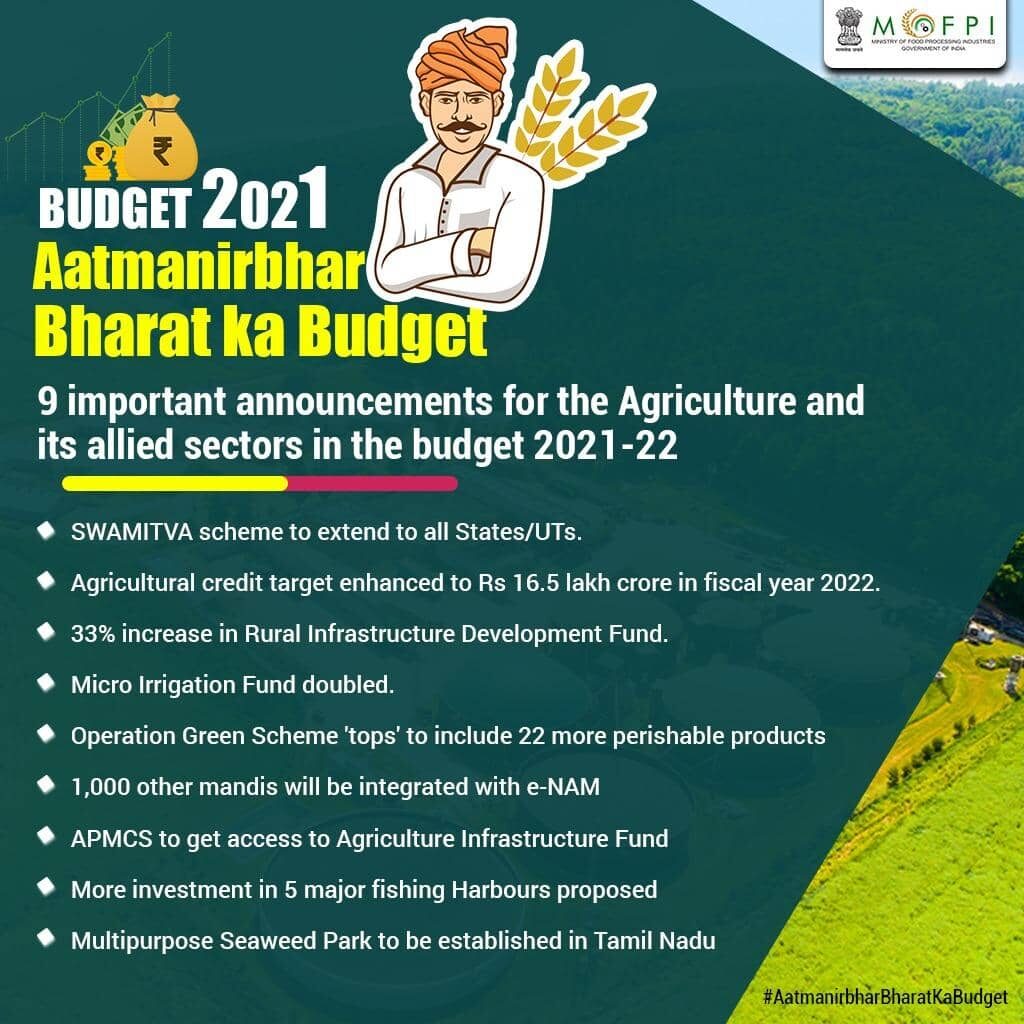India’s agricultural sector is the country’s largest employer. Over the years, India has consistently maintained a trade surplus in agricultural products. The lockdown in the wake of COVID-19 has disrupted economic activities, the supply chains and reduced economic growth. It has exposed vulnerabilities and power imbalances in the Indian agricultural sector for learning and building resilience against future shocks. Short-term coping is important and a priority, as the pandemic, though seemingly abating, may revive and affect the economy including agriculture; impeding food security and livelihoods. The pandemic that demonstrated “necessity is the mother of invention” was correct for the Indian agriculture sector. Throughout 2019-20, India’s agricultural and allied exports were worth Rs. 2.52 lakh Crores and its imports were worth Rs. 1.47 lakh Crores. During the difficult time of the pandemic, India remained vigilant about not disrupting the world food supply chain and continued to export. Throughout April 2020 – February 2021, the export of agricultural and allied products reached Rs. 2.74 lakh crore as opposed to Rs. 2.31 crore during the same period the previous year, representing an increase of 18.49%.

Lockdown brought challenges to the Indian agriculture system. These are mainly related to the shortage of labour, equipment, supply chains and fragmented demand. In the long term, this pandemic can be a turning point for positive changes in the Indian agriculture space, including strong supply chains and the establishment of agriculture enterprises in rural and semi-urban areas.
As a preventative measure, the Indian government ordered a nationwide lockdown, from 25th March 2020 affecting the country’s economy including agriculture.
The disease has re-shaped the consumer behaviour, maybe temporarily, in terms of declining demand for animal protein sources to vegetative sources, and the decline in the export of these products signifies this behaviour.
Monthly exports data indicated that the export of agricultural products got impacted to some extent in March 2020 and greatly in April (lockdown period in most of the countries), although production of food grains, cereal, pulses have increased in April 2020. Agricultural exports rebounded in May and June months and were even higher than in the previous year’s corresponding month for many commodities.
Continuous export activities have also helped improve market sentiments and thus, commodity prices were not adversely affected, rather they have improved recently. The data in the economic survey when seen in terms of supply chain challenges, shorter supply chains faced lesser challenges than long supply chains. The shock in the labour supply has experienced a great fall. According to experts, most of the food grains exported are sourced from states that are major producers, such as Uttar Pradesh, Bihar, West Bengal, Gujarat, and Rajasthan. Wheat and rice production in these states is substantial, yet the government is buying little of it at the minimum support price (MSP), forcing farmers to sell at market prices, making them exportable.

Policy tools
The government took proactive and calculated steps to handle a situation they had never faced to minimise losses.
a. Atma Nirbhar Package 3: Support for Fertilizer- Fertilizer Subsidy: Fiscal Policy Measure
b. Amendments to the Essential Commodities Act to deregulate the stock limits, maintain an uninterrupted urban supply chain for milk, vegetables and fruits while on the other hand brought some changes in regulations ensuring smooth agriculture operations throughout the country. A decrease in prices of commodities like cereals, edible oils, pulses, onions, and potato to encourage infrastructure-related investments in agriculture is one simple example.
c. The agriculture marketing reforms aimed at removing restrictions and allowing farmers to sell to any buyer of their choice in any geography, including through electronic market platforms thus helping them get the best price for their produce.
A significant increase of 132% has been recorded in the export of (non-basmati) rice. India’s exports of non-basmati rice have gone up from Rs 13,030 crores in 2019-20 to Rs 30,277 crores in 2020-21. Multiple reasons have contributed to India’s increase in exports, including its expansion into new markets including Timor-Leste, Papua New Guinea, Brazil, Chile, and Puerto Rico. Furthermore, goods were exported to Togo, Senegal, Malaysia, Madagascar, Iraq, Bangladesh, Mozambique, Vietnam, Tanzania Republic and Madagascar. Additionally, India increased its exports of soya meals by 132%.
The market for soya meal has increased from Rs 3087 crores in 2019-20 to Rs 7224 crores in 2020-21. Chairman of the Agricultural and Processed Food Products Export Development Authority (APEDA), Mr M Angamuthu, said there has been a rise in demand for organic produce.

Organic exports, including cereals, millets, spices, condiments, tea, medicinal plant products, dry fruits, and sugar increased by 51 per cent year on year to $1,040 million. This growth can also be attributed to the outbreak of the pandemic, which has caused demand for these products to increase.
However, the balance of trade in agriculture during April 2020 – February 2021 was favourably higher than the same period the previous year and reached Rs. 132,579.69 Crore as opposed to Rs. 93,907.76 Crore.
From a personal perspective, the government should focus on a few of these points to make agriculture more resilient and shockproof.
a) To establish more skilled agriculture entrepreneurs and support local value addition.
b) Investments in agriculture infrastructure including storage, transport, and utilize Information Technology to reach and get hold of real-time data.
c) Shortening of the supply chains to make it useful for farmers as well as medium and large enterprises. India, being surplus on items like rice, meat, milk items, tea, nectar, green items, may take advantage by trading such items with a stable strategy.
Ideas might fail, but one should learn from these failures, something or the other will work, which will help the sector grow.
Written by- Indrani Mukherjee
Edited by- Isha Mehrotra




